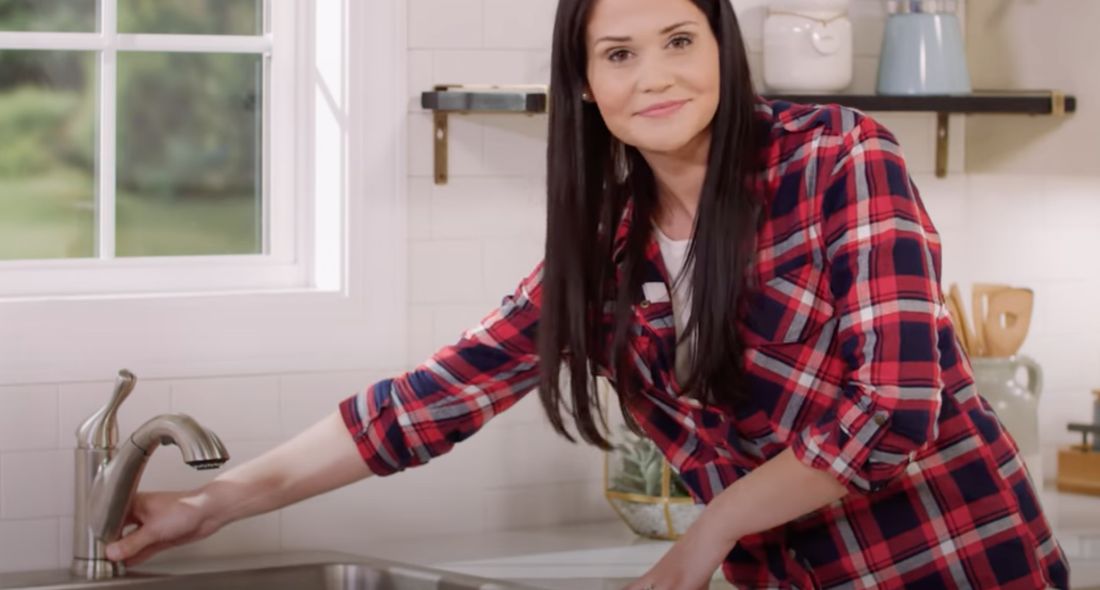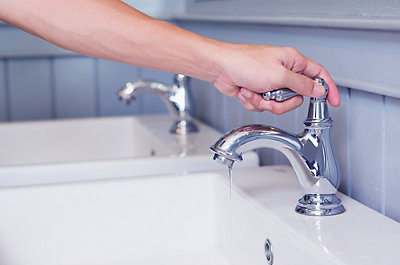Just how do you actually feel in regards to 4 Common Reasons for a Leaky Faucet?

Dripping taps could seem like a small hassle, however their effect goes beyond just the annoyance of the sound. From drainage to sustaining unnecessary financial costs and wellness dangers, overlooking a trickling faucet can lead to numerous repercussions. In this short article, we'll look into why it's vital to address this usual family issue without delay and effectively.
Wastage of Water
Ecological Effect
Dripping taps contribute significantly to water waste. According to the Epa (EPA), a single tap leaking at one drip per secondly can lose more than 3,000 gallons of water each year. This not just stress water sources yet also impacts ecological communities and wildlife based on them.
Financial Expenses
Increased Water Expenses
Beyond the ecological effect, leaking taps can inflate water bills significantly. The built up waste in time equates right into higher utility expenses, which could have been stayed clear of with prompt repair services.
Potential Home Damage
Moreover, long term leaking can cause harm to fixtures and surface areas bordering the faucet. Water buildup can cause discoloration, rust, and also structural problems if left neglected, resulting in extra repair costs.
Health and wellness Worries
Mold and Mildew Development
The consistent presence of dampness from a leaking tap produces an optimal setting for mold and mildew and mold development. These fungi not only endanger indoor air top quality but also present health dangers, specifically for people with breathing problems or allergies.
Waterborne Illness
Stationary water in trickling faucets can become a breeding place for microorganisms and other microorganisms, raising the threat of waterborne diseases. Contaminants such as Legionella bacteria flourish in stagnant water, potentially resulting in major ailments when consumed or inhaled.
Do it yourself vs. Professional Repair service
Advantages and disadvantages of Do It Yourself Repair Service
While some might try to take care of a dripping faucet themselves, do it yourself repairs include their own collection of obstacles. Without appropriate knowledge and tools, do it yourself efforts can aggravate the issue or lead to incomplete repair services, prolonging the trouble.
Benefits of Employing a Professional Plumber
Employing an expert plumber guarantees that the underlying reason for the leaking faucet is dealt with efficiently. Plumbing technicians have the know-how and devices to diagnose and fix tap issues efficiently, conserving time and lessening the danger of more damage.
Step-by-Step Overview to Taking Care Of a Dripping Faucet
Devices Needed
Before attempting to take care of a dripping tap, gather the essential tools, consisting of an adjustable wrench, screwdrivers, substitute components (such as washers or cartridges), and plumber's tape.
Usual Faucet Issues and Their Solutions
Determine the type of faucet and the details concern causing the drip. Usual issues consist of damaged washers, rusty shutoff seats, or faulty O-rings. Refer to manufacturer guidelines or on-line tutorials for step-by-step assistance on repairs.
Preventive Measures
Routine Maintenance Tips
To prevent trickling taps, execute routine upkeep such as cleaning up aerators, inspecting for leaks, and replacing damaged parts without delay. Additionally, take into consideration installing water-saving tools or upgrading to much more effective components.
Importance of Prompt Fixes
Resolving dripping faucets as quickly as they're seen avoids further water wastage and prospective damage, eventually conserving both water and cash in the future.
Influence On Residential Property Value
Understanding of Well-Maintained Home
Preserving a residential property in good condition, including addressing maintenance concerns like trickling taps, improves its perceived worth and worth amongst prospective buyers or tenants.
Impact on Resale Value
Residences with properly maintained plumbing fixtures, including faucets, command higher resale values in the property market. Dealing with trickling faucets can add to a positive impact during building evaluations and arrangements.
Environmental Duty
Individual Contribution to Preservation
Taking responsibility for taking care of trickling faucets lines up with more comprehensive initiatives toward water conservation and ecological sustainability. Every individual's actions collectively make a substantial impact on maintaining priceless resources.
Sustainable Living Practices
By prioritizing prompt repair work and embracing water-saving practices, individuals contribute to sustainable living practices that benefit both existing and future generations.
Verdict
Resolving a leaking tap surpasses mere convenience; it's a necessary action towards preserving water, decreasing economic expenses, and protecting health and residential or commercial property. Whether through do it yourself repair work or professional help, taking action to deal with leaking taps is a small yet impactful means to promote liable stewardship of resources and add to a healthier, extra sustainable future.
How to Fix a Leaky Faucet: Step-by-Step Repair Guide
A leaky faucet may seem like a simple annoyance, but if it's not fixed promptly, that leak could cost hundreds to potentially thousands. From water damage to mold, mildew, and high water bills, even a tiny leak can be catastrophic if left unattended. Damage like this can even affect the overall value of your home, so it's important to take the right approach for leaky faucet repair. You may need the help of a plumber in some cases, but we've got a few tips you can try on how to fix a leaky faucet before calling the pros.
Four Faucet Types
When you're learning how to fix a leaky faucet, the first step is knowing what kind of faucet you're working with! There are four common types.
Cartridge Faucets
Cartridge faucets come in one- or two-handled varieties. In one-handled cartridge faucets, hot and cold water combines in a single cartridge. In the two-handled versions, hot and cold water are controlled separately and mixed in the faucet.
Ball Faucets
Ball faucets have a single lever you push up and down to adjust the pressure and rotate to change the temperature. A slotted metal ball controls the amount of water allowed into the spout.
Compression Washer Faucets
They're the oldest type of faucet, but they're still used in many homes — especially older ones. Compression faucets have two separate handles that, when turned, raise or lower the washer that seals a water valve. This valve stops water from flowing through the faucet when it is turned off.
Disc Faucets
Disc faucets rarely need to be repaired due to their maintenance-free design. The water flow is controlled by two discs — the upper one raises and lowers against a fixed lower disc, creating a watertight seal. If your disc faucet starts leaking, you may need to replace the seals or clean residue buildup from the inlets.
Fixing a Leaky Faucet
Step 1: Turn Off the Water
Whether you're learning how to fix a leaky bathtub faucet or how to fix a leaky kitchen faucet, always turn off the water supply to your working area when you're fixing a leak. The last thing you want is a flood added to your list of things to fix.
Look for the shutoff valves below your sink or around the tub and turn them clockwise to stop the water flow. If your faucet doesn't have shutoff valves, you may need to turn off the water for the whole house. Check to make sure it's off by turning the faucet on. If nothing comes out, you're ready to start the repair.
Step 2: Take Apart the Faucet
How you disassemble your faucet depends on the type of fixture you have. You can use a flathead screwdriver to remove the caps on top of the handle or handles for cartridge and compression faucets. Inside, you should see handle screws. Unscrew these with a screwdriver to remove the handle.
Disc- and ball-style faucets will typically have an inlet screw near the handle, and removing that will reveal the interior of the faucet.
Detach the Valve Stem
For cartridge- and compression-style faucets, you'll see the inner valve stem or cartridge once you remove the faucet handles. If you have a compression faucet, unscrew the brass valve stem. If you have a cartridge faucet, pull out the cartridge. If your cartridge has been in place for a while, it may require some tools or extra force to remove it due to mineral deposits.
Examine and Replace Parts
Once you've removed the parts, check them out to confirm what needs to be replaced. You may see corroded rubber washers, O-rings, stems, or cartridges. On a ball-style faucet, check the seats and springs for damage.
If you need to repair a leaky disc faucet, check the inlet and seals on the lower disc.
Once you determine what parts must be replaced, visit your local hardware store. Bring the damaged parts with you to ensure you can purchase the correct components to replace them.
Clean Valves and Faucet Cavity
If you've removed a stem or cartridge, you may notice mineral buildup in the faucet's threads. Use white vinegar to clean the valve seat by soaking it for a few minutes, then scrub it away with a soft toothbrush and rinse with warm water. You can also clean the interior of the faucet in the same way.
Reassemble the Faucet
Once your faucet is cleaned and the required parts have been replaced, it's time to reassemble it. Put the pieces back together and slowly turn the water supply back on. Doing this slowly is crucial because too much initial water pressure can damage the new hardware you've just installed.
https://homewarranty.firstam.com/blog/how-to-fix-leaky-faucet

Hopefully you liked our post on 4 Common Reasons for a Leaky Faucet. Many thanks for spending some time to read through our article. Enjoyed reading our content? Please quickly share it. Help someone else discover it. We thank you for reading our article about Should I Repair or Replace a Leaky Faucet?.